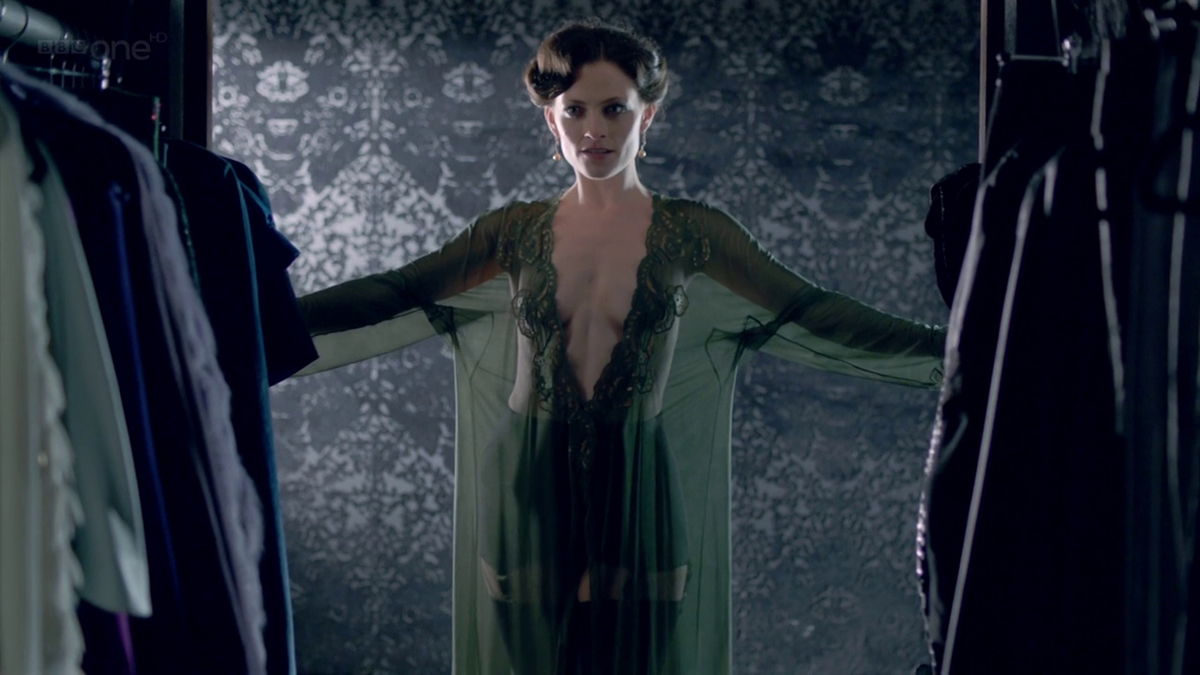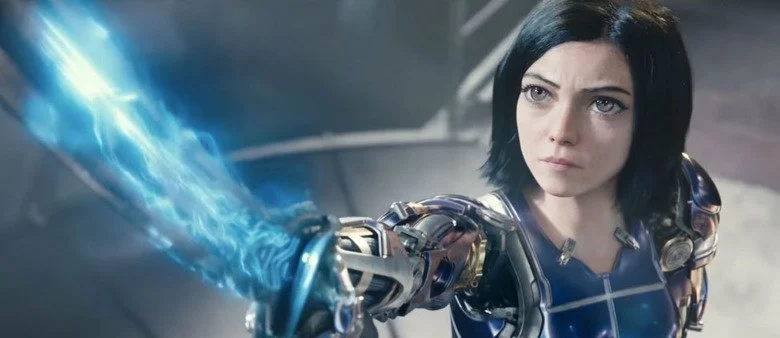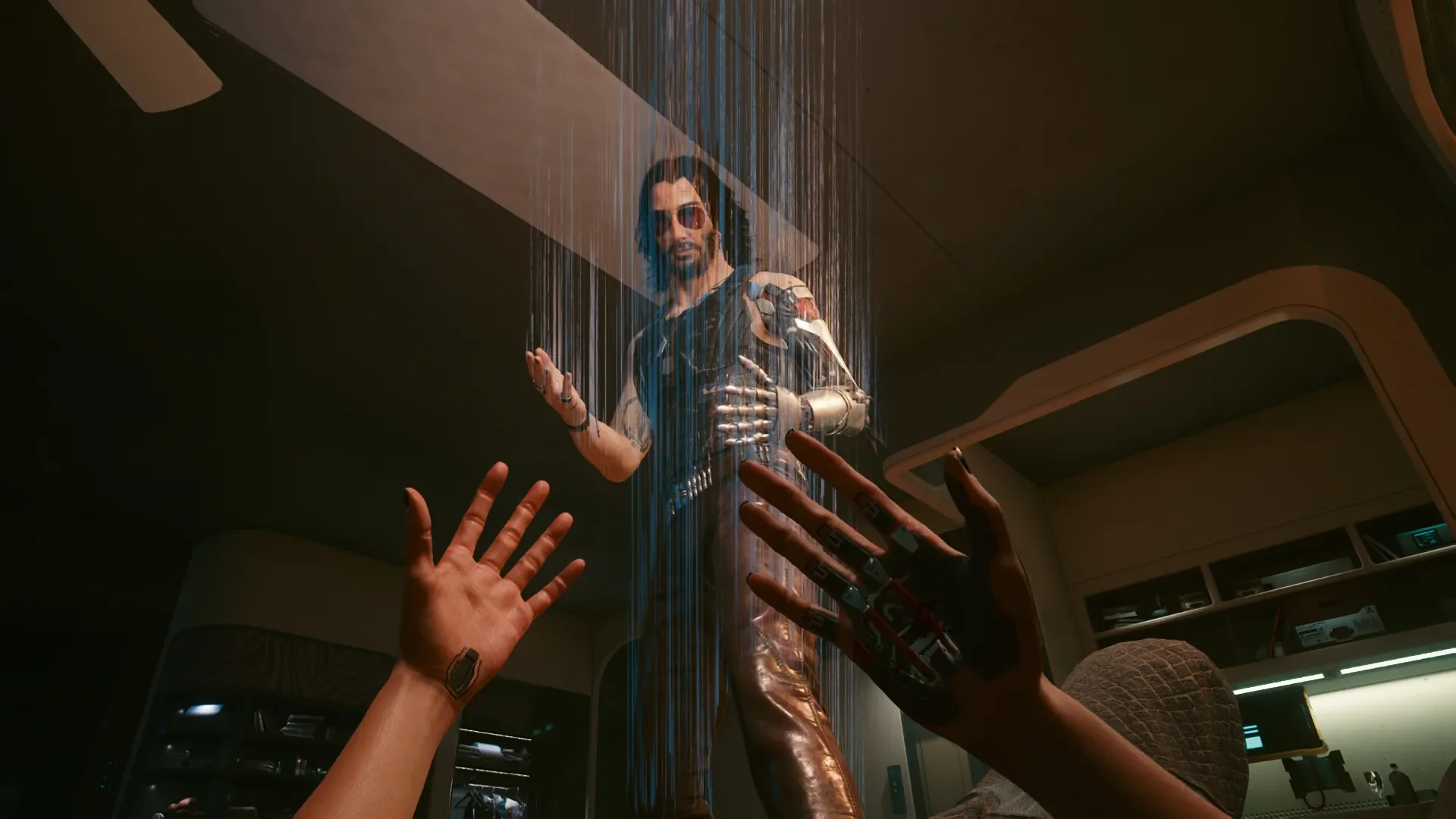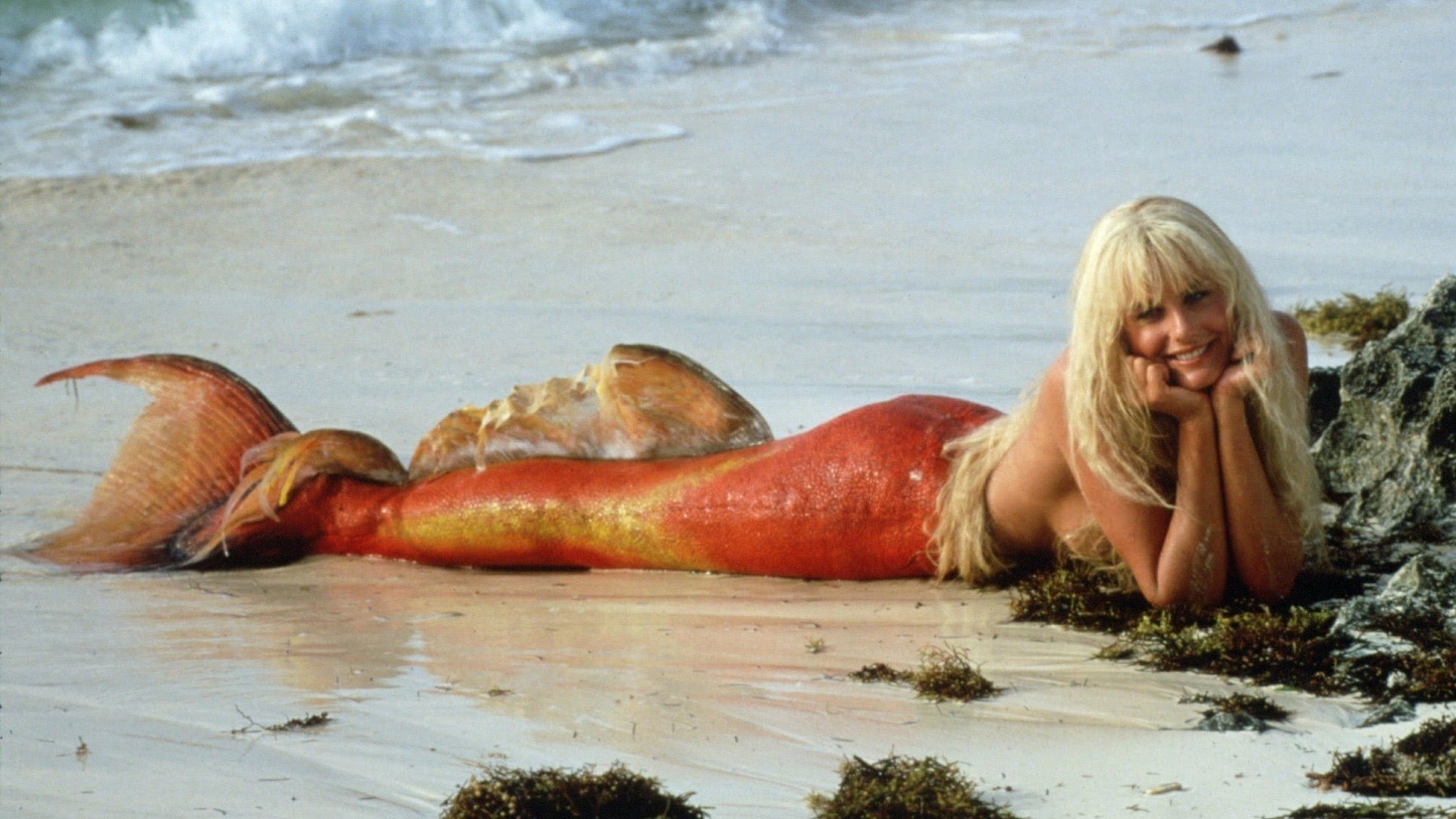Stripped Down: Nudity as Narrative Fuel
Art or Exploitation? Nudity in transmedia art is both a catalyst for emotion and a driver of commerce. But it is also a narrative reflection of culture and our shared history.
Under the Skin (2013)
DISCLAIMER: I totally get it. It is always an individual decision when it is okay to show some skin and when it is not. Take The Smashing Machine, for instance. Here, the partially naked body is an integral part of the world, the character, and ultimately the sport it portrays. Of course, we all have our own tastes and personalities, and that matters a lot in this context. This essay discusses nudity, sexuality, and identity in media and art. Some examples may contain sensitive content. The analysis aims to explore narrative, cultural, and artistic perspectives, not to provoke or sensationalize.
My humble opinion: I often catch myself feeling irritated by nudity in films. I get pulled out of the story and ask myself, Why do you need to show this so explicitly if it adds nothing to the narrative? Of course, that applies to other poorly used storytelling elements as well. Or simply bad timing. But especially when it comes to nudity, or the deliberate display of bare skin, like the overly shredded torsos of superheroes, it often feels like pure crowd-pleasing to me with no real connection to the story. Or take the beach scene in Top Gun that practically oozes masculinity. It’s like a punch in the face. Boom! Look at my six-pack! Not to mention the false ideals it suggests. Okay, okay, subjective opinion. Some in the audience cheered in the theatre and I can’t be mad about it -_-
But have we ever seen Aragorn shirtless in The Lord of the Rings? No. Because it simply was not necessary to convey his heroic nature or intimacy to Arwen. His actions spoke more about his character than any physical depiction ever could. Wait a minute, did David Corenswet's Superman ever show off his toned naked torso? *ponders seriously* Uhh, I don't think so. James Gunn stated „[…] David said that Superman wants kids to not be afraid of him. He wants people to like him. He wants to be a symbol of hope and positivity […]“[+] - Well done.
The Lord of the Rings: The Return of the King (2003)
In other moments, whether in films, games, or literature, I see it as a privilege to witness an intimate scene when it reaches me on an emotional level. When nudity serves as a narrative tool, it opens a door to genuine closeness rather than mere stimulation. In Baldur’s Gate III, for instance, I spent a long time building relationships with other characters, going on adventures, making choices, until I finally found myself lost in a romantic moment under the light of stars.
Shadowheart in Baldur’s Gate III (2023)
Nudity in a narrative medium is neither new nor rare, whether in films like Eyes Wide Shut, games like Death Stranding, or books like Memoirs of a Geisha. Especially in modern media, nudity has become deeply embedded in storytelling. Stanley Kubrick’s Eyes Wide Shut, for example, does not use the naked body for erotic gratification, but as a symbol of power dynamics, secrets, and dependency within marriage. Video games like Death Stranding, on the other hand, portray nudity in an almost clinical way. Norman Reedus’ body is not sexualized but presented functionally, as a vulnerable yet powerful vessel carrying a soul and a mission. These two examples illustrate how differently nudity can be coded across media. The culture of the nude body in fiction has become as normalized as it is in reality. Especially younger generations no longer see it as a taboo subject, as was the case only a few years ago.
But what effect do we want to achieve through explicit nudity in storytelling? How can we use it meaningfully? Where do we draw the line, if such a line even exists, and how have we evolved up to this point?
Objectivity
From an outside perspective, pure nudity is only objective. We see the shell, not the core. It is a physical image, not a psychological one. Steve McQueen’s Shame takes this idea to the extreme, portraying nudity in a sober and almost clinical way. The bodies appear as mere shells that create distance instead of intimacy.
Another example is Jonathan Glazer’s Under the Skin with Scarlett Johansson. Here, nudity is used not to evoke eroticism but alienation. The protagonist lures men with her body, yet the camera’s gaze remains cold and detached. Johansson appears not as an individual with emotions, but as an otherworldly being. The film shows that nudity can also create radical distance. The body becomes an object, not a subject.
Under the Skin (2013)
Nature
Whether created by a higher instance or emerging by chance from the primordial soup, humans are fascinating beings. Our bodies are functional and robust, yet fragile and finite. Paradoxically, they carry within them the capacity for both self-destruction and healing. The formation of such a body, in the womb or by other means, is nothing short of a miracle. Ghost in the Shell poetically depicts this process of artificial creation. We see a metallic skeleton assembled, enveloped in fluid, and born floating in a pool. It is a technical representation of organic birth, at once intimate and otherworldly.
Ghost in the Shell Movie (1995)
It becomes even more intriguing when human anatomy is reinterpreted. What does nudity look like then? In Baldur’s Gate III, for example, we create our own character, down to the shape and size of the genitalia. Choosing, for instance, a Dragonborn or another non-human being completely shifts our perception. Here, nudity becomes an act of creative re-creation, a fantastical interpretation of the body, somewhere between nature, imagination, and…
Art
Human nature in its creation is something beautiful, in every form and color, regardless of gender. This beauty is often used as a means of artistic expression in all forms of art. Some of the fundamental building blocks of art are based on the characteristics and proportions of the human body, shaping what we perceive as beautiful and authentic.
The nude body has served for millennia as a mirror of ideals, from Michelangelo’s David to Botticelli’s The Birth of Venus. Films like Eyes Wide Shut consciously reference this tradition by presenting bodies as living paintings. Particularly striking is Eva Green’s appearance in Bertolucci’s The Dreamers. Her half-naked body is staged like a statue in the room, her arms draped in black as if she were an unfinished sculpture. Here, the image of classical art merges with cinematic representation. Two forms of art come together, and the human body becomes a canvas for beauty, fragility, and cultural allusions.
The Dreamers (2003)
Yet ideals are often suggested as well. Beauty, like art, is always in the eye of the beholder, but it is frequently idealized. For women: a slim waist, large breasts, and long legs. For men: a sharp jaw line, strong arms and a six-pack. Like Barbie and Ken. What has entered media almost caricaturally is increasingly celebrated as an ideal. The body becomes marble, worn down and sculpted until it loses its natural allure. Here, I am pointing to the trend of cosmetic alteration, which often destroys more than it preserves. Art follows no rules. You are beautiful just as you are.
Dominance
Who has not experienced this situation? You and your partner are watching a movie and a character appears who seems to have won the genetic lottery. Your partner melts in admiration and you think, "Okay, I could look like that if I wanted." We automatically compare ourselves and may feel threatened or envious. Sometimes, however, we are only presented with a false ideal. Those who feel comfortable in their own skin and express it are hard to challenge. Almost animalistic. A characteristic often attributed to the Femme Fatale or the Homme Fatale. Dominance through self-confidence and charisma.
Series like Game of Thrones vividly show how nudity can be used to demonstrate dominance. The "Walk of Shame" scene initially appears as humiliation, but later becomes part of Cersei's transformation into the absolute ruler. Admittedly, this example could also fit under vulnerability, but the way Cersei emerges from it is far more impressive. In video games, this pattern is visible in characters like Kratos (God of War), whose bare upper body can be read as a symbol of untamed strength and almost animalistic dominance. The nude body thus becomes a staging of superiority.
Kratos in God of War III
Manipulation
The allure of nudity has a strong impact on others. The Femme Fatale, for example, seduces through her feminine charms, exposed skin, and feigned vulnerability. Irene Adler in modern Sherlock Holmes adaptations masters this quality brilliantly. The male counterpart, the Homme Fatale, similarly uses his physical attributes as a tool to manipulate others.
Irene Adler in the Sherlock Series
Basic Instinct is perhaps the most famous example of the Femme Fatale’s power, where nudity serves both as a weapon and a deception. Irene Adler in the films and series continues this motif by styling nudity as a strategic weakness that actually grants power. She even refers to her naked body as a combat suit.
Trust
The ultimate act of trust is to give oneself physically to another being and, in a metaphorical sense, touch not only the body but also the soul. Lust is subordinated to love. When two beings allow themselves to connect, shed their garments, and lower the walls around their souls, we are at our most vulnerable, and exposing ourselves requires trust. Nudity is no longer only about the body.
In The Last of Us Part II, the intimate scene between Abby and Owen demonstrates how physicality can deepen relationships. The nudity is not voyeuristic but embedded in a story of loss, closeness, and trust. Films like Blue Valentine illustrate the same principle. Nudity is not used for sexual gratification but to convey emotional openness. This shows that mediated nudity can build a bridge between physical and emotional intimacy.
Abby and Owen share a moment of intimacy in The Last of Us Part II
Vulnerability
But this openness has a dangerous shadow side. In intimate moments, we are most vulnerable. We drop our guards. Situations that require trust can be exploited. Shame arises when we feel defenseless against external influences or gazes, particularly if these influences are aggressive, if we are insulted for our appearance, excluded, or even abused.
The famous shower scene in Alfred Hitchcock’s Psycho (1960)
Alfred Hitchcock’s Psycho demonstrates vulnerability perfectly in the legendary shower scene. Nudity, water, and isolation heighten the sense of threat, as the protagonist is completely defenseless. Video games like Heavy Rain use nudity similarly, when the player character Madison Paige is left unprotected in a threatening situation. Characters like Kratos (God of War), whose bare body represents not only physical strength but also emotional suffering, illustrate this double coding of nudity. His ash-white skin is a permanent mark of guilt and loss, a wound materialized on his body. Here, nudity symbolizes both animalistic strength and painful vulnerability.
characters like Neo in The Matrix reflect a similar arc. When he wakes up in the real world, stripped of all clothing and illusions, his vulnerability becomes the very foundation of his rebellion. His bare body does not titillate. It signifies rebirth, resistance, and the reclaiming of agency.
Neo wakes up; The Matrix (1999)
Horror
Nudity in horror follows a paradoxical principle. Something familiar is transformed into pure terror. The naked body, normally a symbol of closeness, beauty, or intimacy, suddenly becomes a threatening foreign object. In Silent Hill 2, monsters like Pyramid Head appear with grotesque, bodily references that carry both sexual and sadistic connotations, a distorted echo of human corporeality. Sigmund Freud describes this phenomenon as the uncanny: something familiar that becomes frightening through displacement or estrangement. Mary Shelley’s Frankenstein already explores this transformation, as the artificially assembled body of the monster is read not as human intimacy but as repulsive otherness. Nudity in horror becomes a nightmare, a reminder that what feels most familiar can always turn into its opposite. I mean, have you seen The Thing, The Fly or The Substance?
The Fly (1986)
Provocation
Once, one of my students asked me, "Hey Rob, what do you think of Lars von Trier’s Nymphomaniac?"
First, I should admit that I have never been a fan of Lars von Trier or his films. I have often distanced myself from his works because they seemed offensive and provocatively forced. Nymphomaniac, with its explicit depiction of sex and violence, is almost snuff-like. A film that fascinates as much as it repels. Some celebrate its uncompromising nature, others avoid it entirely. Yes, I think art is allowed to do this. But art is always in the eye of the beholder.
David Fincher once put it aptly, "I think people are perverts." And I agree. This is exactly what makes art so powerful. It confronts us with our own depths, with what we want to see but perhaps should not see. Yet I want to take something from a story – understand, feel, grow. I have a subjective standard.
This provocation, however, has its justification. We are challenged, reduced to the flesh. Provocation in art can be liberating or cheap. It forces us to recognize boundaries – societal, moral, personal. While some artists use provocation as a mirror of human experience, elsewhere it degenerates into an end in itself, a tool to demand attention rather than insight. Nymphomaniac exemplifies this narrow line. Trier provokes with images meant to test us, but the question remains whether they reveal more than they conceal. True provocation, it seems to me, lies not in the shock moment, but in its aftermath, in the discomfort that remains when the lights come on in the theater. Not to be confused with…
Rebellion
Provocation seeks reaction. Rebellion seeks change. While provocation aims to shock and gain attention, rebellion arises from an inner need to break free from the system, from societal norms, or from oneself. In Ghost in the Shell, for example, the protagonist’s nude body is not an erotic surface but a symbol of self-discovery. Where does humanity end and the machine begin? The occasional nudity of Motoko Kusanagi is not a lure, but a radical gesture of identity seeking in a dehumanized world, a reduction to a fleshly or modified shell for a spirit rebelling toward freedom and transcendence.
In X-Men: First Class, Mystique’s blue, naked, shape-shifting body becomes a symbol of unapologetic self-acceptance. For most of her life, she hides behind a human façade to fit in, but her rebellion begins when she refuses to mask her true self any longer. Her nudity is not an act of seduction but a statement of power, a declaration that she will no longer conform to human beauty standards. Nudity thus becomes not provocation, but a manifestation of resistance. An act of self-empowerment that does not shock but awakens.
In Battle Angel Alita, the protagonist embodies rebellion on multiple levels. Originally designed as a weapon of war, she now turns her abilities against her creators, using their own tools to fight back. At first, she defends the people she cares about, but as she gains self-awareness, her resistance expands to the oppression of Zalem and the ruling structures of Iron City. Her partly cybernetic body becomes an instrument of this rebellion, allowing her to push boundaries and assert her agency. Any partial nudity or exposed flesh is not used for provocation or sexualization, but as a symbol of empowerment, emphasizing her fragmented identity and her path to self-assertion. Her “nakedness” is more technological than physical, yet it carries the same meaning: a form of self-expression in a world that tries to define her. She wields her body to resist and challenge those who seek to control or oppress her, striking back with the very weapons intended to subjugate her.
Alita raises her sword against Zalem in the live-action adaptation Alita: Battle Angel (2019)
Nudity thus becomes not provocation, but a manifestation of resistance. An act of self-empowerment that does not shock but awakens.
This leads us to a very exciting yet often overlooked aspect of nudity:
Identification
Realization occurs internally, in a moment when the mind understands that freedom does not only mean liberation from external structures, but also comprehension of one’s own existence. Nudity here becomes a paradoxical metaphor. We can remove clothing, shed roles, drop masks, but our fleshly shell remains. It is the final boundary that cannot be easily discarded.
What if that shell does not reflect what we carry inside? If the mind is not rebelling against the system, but against its own body? Then nudity loses its clarity. It becomes a painful realization of identity, a space between estrangement and acceptance.
In stories such as Cyberpunk 2077, where bodies can be modified, altered, or completely recreated, these boundaries become completely blurred. The body becomes malleable, the mind seeks a home, even if it unintentionally harms the actual inhabitant. What does nudity mean when it no longer stands for authenticity, but for alienation? Silverhand and V are forced to share one body. The boundaries between their two minds often blur as they influence each other, evolve together, and often share feelings and thoughts, developing a shared consciousness. Regardless of whether they are drawn to each other or repelled by our decisions as players. No secrets, complete mental nakedness.
Our protagonist V and Johnny Silverhand wake up in the same body; Cyberpunk 2077
In contemporary discussions around gender identity and LGBTQ+, nudity is no longer a universal symbol but an individual one. What is revelation for one can be exposure for another. Nudity becomes an act of self-definition. A quiet but powerful statement, finally acknowledging the body as what it is or may be: a home.
Cultural Freedom Boundaries
Nudity is not perceived the same way around the world. What may be considered casual or artistic in one culture can be taboo or outright censored in another. In Europe, for instance, nudity is often treated with relative normality, especially in art and cinema. French and Scandinavian films frequently incorporate nudity as part of authentic storytelling rather than provocation. In the United States, however, the approach is far more conflicted. Violence is widely accepted, while nudity often triggers age restrictions, public debate, or marketing controversies.
This contrast becomes even clearer in markets like China or the Middle East, where nudity is often heavily censored or digitally altered. Global media companies are acutely aware of this. Even major studios like The Walt Disney Company have quietly modified or removed scenes to make their films acceptable for these markets. A well-known example is Splash, where digital effects were added to cover the actress’s bare skin in later versions of the film to make it suitable for wider distribution. What disappears is often not violence, but bare skin.
Daryl Hannah as mermaid Madison in the movie Splash (1984)
In Japan, however, the cultural relationship to nudity is shaped by different traditions. Public bathing culture and Shinto beliefs historically view the naked body as something natural and pure, rather than shameful. While modern media laws still regulate explicit content, the underlying perception is often less moralizing and more tied to notions of cleansing, vulnerability, and honesty.
Nudity, then, is not just a narrative or aesthetic choice. It is a cultural marker, a mirror of national values, and ultimately also a strategic business decision. What is seen or unseen is not only shaped by artists, but by borders, governments, and markets.
What No One Talks About
Made it this far? Good. Now brace yourself. We’re talking about a key ingredient, the juice that runs through the veins of media culture. Porn. It doesn’t matter how evolved one might think the human race is, base desires still drive progress in all things. Eroticism and nudity are not just cultural expressions. They are engines of entire industries. Many of the technologies that shape how we consume media today didn’t start in Hollywood boardrooms or academic labs but in the adult entertainment sector. The VHS boom of the 1980s? Driven largely by porn.[+] DVDs, online streaming, and even early VR adoption followed the same pattern. Whenever a new format emerged, erotic content was often the first to push it forward, test its limits, and make it profitable. And of course it had an impact on how we use the internet today.[+]
Nudity is, in this sense, not only an artistic device but a currency. It has shaped markets, influenced consumer behavior, and paved the way for how we experience media. Interactive films, immersive 360° experiences, personalized content. You already guessed it. Much of this innovation has roots in erotic experimentation.
But of course this raises uncomfortable but necessary questions:
Where does art end and commerce begin? Can the naked body still be seen as pure expression when it’s also one of the most lucrative commodities in the world?
Simply put: Naked skin is part of both worlds. It is art and commerce at once. A canvas of human expression and a powerful economic force. Like it or not. Sex sells.
Conclusion
Okay, towards the end I drifted a little from the definition of nudity, but I felt it was important to mention that nudity does not necessarily have to be physical in nature.
While Western media often associate nudity with provocation or liberation, in many Asian productions it is considered part of spiritual or aesthetic purity. In Japanese anime like Perfect Blue, nudity symbolizes a loss of identity rather than eroticism. Nudity in transmedial art is more than merely the display of skin. It functions as a catalyst for emotions, aesthetic impact, societal discussion, and not least, commercial interest. At the same time, it reflects our cultural notions of beauty, power, vulnerability, and identity, whether in film, video games, or visual arts. The naked body can provoke, manipulate, dominate, or reveal. It is a canvas, a mirror of our hopes, fears, and desires.
Yet nudity is not universal. It remains subjective, situational, and mutable. What expresses freedom for one person can signify alienation for another. Especially in times when questions of gender identity, self-determination, and diversity increasingly come to the forefront, nudity in art proves above all to be a tool for self-reflection.
Perhaps its greatest value lies not in showing the body, but in uncovering the stories, desires, and boundaries that we project onto it.















